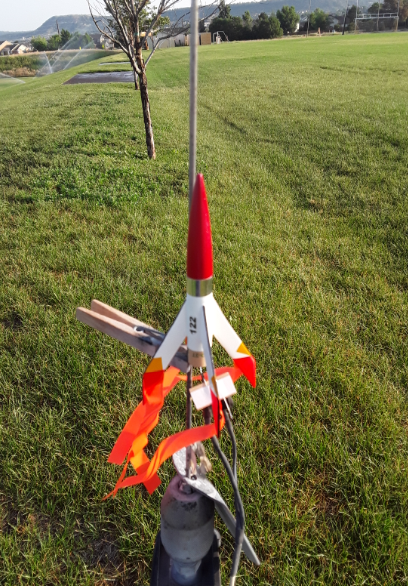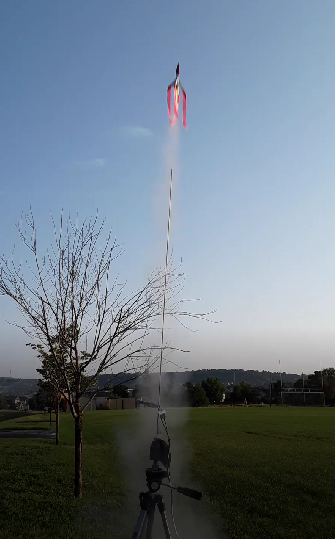This morning's weather conditions were near perfect for yet another short rocket launch session at Douglas County High School. Temperature was hanging around 60 degrees with minimal wind.
Even though there is still some atmospheric haze from all of the western wildfire smoke, it's not as bad this morning. I can live with it for half an hour.
The first model off the pad was the Estes Super Shot flying on A8-3 power.
It flew very straight to a low altitude, perhaps 200 feet.
At ejection, there was no parachute, and the model plummeted to land within five feet of where I was standing. No damage, though, because of the sturdy plastic construction. I noted that the nose had ejected, but the parachute was hung up right at the end of the body tube.
Next up was the maiden launch of fleet #122, an Estes Quark. This model is not much larger than the Estes Mosquito, though it does have a longer, pointed nose.
I took the advice of some folks on The Rocketry Forum, and taped a 1/2"× 6" plastic streamer onto each of the model's fins. This was to serve a four-fold purpose: (1) limit the total altitude, (2) render the model easier to track throughout its flight, (3) slow down the model's descent, and (4) make it easier to locate on the ground. The streamers are attached with strips of Kapton tape which is very light, thin, and strong. No worries about separation at boost.
The streamers fulfilled all of these functions! Boosted by a 1/4A-3T motor, the model leapt off the pad, streamers fluttering, and hit an altitude of maybe a little over a hundred feet. It arced over and was headed down, with the ejection charge popping maybe 20 feet above the turf.
It still stuck the landing, but it definitely was easy to find.
After this short and highly amusing flight, I determined that the streamer-laden Quark would fly much better with a 1/2A-2T motor.
And it shall....




